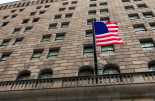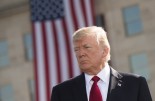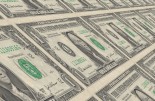Monex Europe: Fed understood the assignment, but markets still don’t buy it

The Federal Reserve unanimously voted to hold the Fed funds target range at 5-5.25% today, despite expectations based on intermeeting comments that some regional Fed Presidents and Governor Waller would dissent in favour of a 25bp hike.
Behind the decision to hold rates were inconsistent signals across multiple inflation, growth, and labour market indicators, with the most pronounced conflict stemming from the labour market. With hard data showing inflation continuing to track lower, however, the Fed used this opportunity to take stock of the 500bps of tightening that has already been delivered since March 2022, as we had expected.
Acknowledging the signal that a conditional pause might relay to markets at a time when effective financial conditions are loosening, the accompanying Fed communications retained a fairly strong tightening bias. The most notable sign of that bias came from the Summary of Economic Projections, where the median dot plot projection for the effective Fed funds rate was raised by 50bps to 5.625%, more than the 25bps that was widely expected.
Accompanying the significantly more hawkish rate projections were a suite of economic forecasts that painted a much more convincing soft landing picture, again a sign that the Fed indeed believes it can hold rates 'higher for longer'. Within the rate statement, the guidance was less explicit but, reading between the lines, it reaffirmed the Fed’s assessment that the balance of risks remains tilted to the upside.
Despite the hawkish communications accompanying the Fed’s decision to hold rates, markets remained unconvinced. Pricing of a rate hike at the July meeting edged up only slightly to a 60% implied probability, while a full rate hike is yet to be priced in for the entirety of this year.
In FX markets, the dollar whipsawed from nearly reversing its daily losses after the initial communications were released, only to retrace half of the move throughout the press conference. Meanwhile in equities, despite ample volatility following the decision, by the time the dust had settled, the moves proved fairly uneventful.
Fed projections resurrect the soft landing
The soft landing narrative has been brought back from the dead. By and large, the latest set of economic projections suggest that the Federal Reserve believes it is now more capable of bringing inflation down without a credible risk of recession. They showed that in 2023, even with a higher terminal policy rate that growth will be stronger, inflation will be lower, and the job market won’t need to loosen as much as previously feared to achieve this goal.
The only exception to this narrative was the core PCE inflation forecast, which was revised higher despite headline PCE being bumped down. Across the entire forecast horizon, the largest revisions since the March projections were all for 2023, with real GDP growth more than doubled, up +0.6pp to 1.0%, the Federal funds rate up +0.5pp to 5.6%, and unemployment down -0.4pp to 4.1%.
The inflation forecasts were subject to smaller changes, with the median PCE forecast lowered by -0.1pp to 3.2%, but core PCE raised +0.3pp to 3.9%. Higher core inflation likely reflects the stronger overall view of the economy, but officials did not comment on why they anticipate headline PCE to cool in spite of that.
It’s possible that they now view commodity prices as likely to fall further than they previously thought, especially with growth slowing in Europe and China, but with the information available, it is difficult to make an inference with any certainty.
Fed’s forecast revisions suggest officials now see a soft landing as more possible
Aside from the soft landing revival, the other key takeaway from the revisions to the median forecasts is that they reinforce the higher-for-longer narrative the Fed has repeatedly communicated for several months. This was clearly visible in the policy rate projections, and the revisions to GDP and unemployment make it more credible.
In both 2024 and 2025, the median Federal funds rate forecast was raised by 0.3pp from the March projections, whereas revisions were marginal for all other economic indicators, ranging from -0.1pp to +0.1pp.
Looking to the dispersion of forecasts, what’s also clear is the Fed views near-term economic uncertainty as having broadly fallen. In 2023, the central tendency band was tightened considerably for real GDP, the unemployment rate, PCE inflation, and the federal funds rate, although it was widened by a tenth of a percentage point for core PCE. The full range told a similar story, but the changes were smaller in size.
To some extent, one could argue that this contradicts the overall message of the decision as reduced uncertainty does not support the argument to wait for more data before changing the policy rate once more. In the Fed’s defence, however, markets tend not to read that much into the Fed’s forecast dispersion, focusing more on the rate statement, median forecasts, and press conference.
Beyond 2023, the changes to the width of the central tendencies and ranges were mixed, and do not broadly suggest that uncertainty has moved in either direction. This isn’t surprising, though. The Fed scarcely knows where the economy is headed in the next few months, let alone the next few years. If it did, it would not be taking such a data driven, meeting-by-meeting approach to monetary policy.
What are you waiting for?
The narrower range of the economic projections and a significant uprating in the 2023 dots naturally raises the question of why the Fed deemed it necessary to pause at today’s meeting if it still sees further hikes as necessary, and it didn’t take journalists long to ask Chair Powell just this in the press conference.
This question is especially pertinent when considering that only one jobs and payrolls report, the third reading of Q1 GDP, and one round of soft data are set to be released ahead of the July 27th meeting. In response, Chair Powell highlighted that it was 'prudent' to take a slower pace when approaching the terminal rate. However, with the data unlikely to send a consistent signal on the path for inflation in just one month, markets began to question whether the Fed could in fact resume its hiking cycle in July.
A Freudian skip?
The only reason why pricing of a 25bp hike in July didn’t slump below 50% is due to Powell’s comments, which suggested that the Fed was eying up a return to the 2018 pace of tightening. That is, 25bps per quarter. Not only did Powell accidentally call today’s meeting a 'skip' before walking back the comment, suggesting that this is merely a temporary pause, but he also forcefully called the July meeting 'live' while stating that a moderation in the pace of hiking, 'if only slightly', was appropriate as rates approached neutral.
Naturally we’d prefer more black and white forward guidance from the Fed Chair, however that won’t be forthcoming at this stage of the hiking cycle as central bankers want to maintain optionality. Instead, reading between the lines, these off-the-cuff comments all suggest that the balance of risks remain towards a further hike in July and a likely return to a 25bps quarterly pace of tightening. The question is if the data supports this, and judging by the reaction in USD overnight index swaps, markets don’t think it will.
Where does this leave the dollar?
Ultimately, we’re inclined to agree with how markets have responded to today’s decision. In our eyes, the threshold for two additional rate hikes is elevated, especially as an array of measures point towards sustained disinflation in the US.
Instead, today’s dot plot projections should be viewed as more of a signalling tool aimed at preventing financial conditions from loosening further as opposed to an accurate round of rate projections. This should see the recent round of USD depreciation consolidate and potentially even extend in the coming weeks, albeit to a limited extent given Fed officials are reluctant to officially call the end of the hiking cycle.
Now, all eyes will turn to peer DM central banks, where rate differentials with the US can once again be closed.








